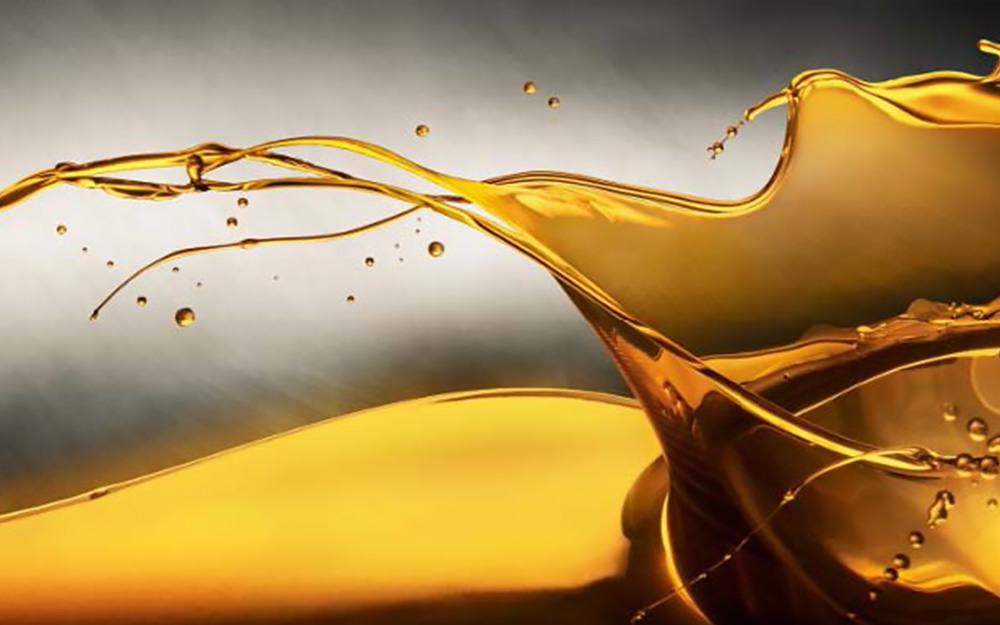The criterion needed to keep your hydraulic fluid conditioned is all about keeping the fluid clean, cool and dry. With too much crap, too many excited molecules or too copious the humidity, a hydraulic system is usually too sick to function well.
Hydraulic machines are dumb, of course, and aren’t able to tell you through pantomime or a soft whisper that their fluid is dirty, hot and wet except when something fails as a result. You need to implement a system to monitor fluid conditions, and luckily, most hydraulic machines at least cover the (very) basics of monitoring. Even the cheapest hydraulic power unit has a thermometer on their tank level gauge. Unfortunately, it tends to stop there.
You cannot tell how clean hydraulic oil is by looking at it.If you think dunking a white stick into the hydraulic reservoir and then pulling it up to visually observe the lack of either gunk or year-old-engine-oil appearance is appropriate, then you only have yourself to blame when your pump grenades. First of all, if your hydraulic oil looks like used engine oil, it’s too far degenerated and should be changed immediately. Second of all, particles of the size to damage hydraulic components cannot be seen with the naked eye.
The concerning particles causing the most damage (at least according to ISO) are much too small for us non-owls to see. According to the internet, which we know is never wrong, humans can see in the range of 30-100microns. The particle sizes we look out for in a hydraulic system are 4 micron, 6 micron and 14 micron, all of which are too small to see with the naked eye.So if you think your white dipstick coming up looking clean and dirt free is a good way to test hydraulic oil, you’d be sorely wrong. You simply can’t see the most damaging particles; below 4 micron, particles are too small to hurt anything, and above 14 micron, they’re too large to get into clearances.
Humans aren’t as dumb as hydraulic machines, luckily, so there are ways for us to measure the size and quantity of particles in your hydraulic fluid. The most efficient method to measure particle contamination is with a device employing a laser to observe the size and volume of fluid flowing past. Particles can also be counted using patch tests and microscopes, but it seems a little old school to me when electronics are so effective.
If you don’t already have it in place for your hydraulic machines, there are a few ways you can implement a particle contamination measuring and tracking program. The cheapest way to get your foot in the door is to take advantage of the various oil analysis labs which exist for this sole purpose. These labs would typically offer a program where you prepay for the sample bottle, which includes a document to be filled out for both machine operation details, including oil type, viscosity etc, as well as machine tracking info, such as machine or serial number.
It is important that if you decide to go with a sample bottle program you ensure it is a program designed for hydraulic oil, rather than diesel truck oil or the like. Vehicle oils are normally tested to ensure the additive package is within specifications, however, hydraulic systems are much more particular to the control of particle contamination and water saturation levels, and an engine oil test might not show the ISO 4406contamination reporting standard of 4/6/14 micron particle quantities. Also, vehicle systems are less sensitive to water contamination, and the engine oil test may only use a crackle test to detect if there is free water in the oil.Free water is terrible for a hydraulic system, and more than 50% “humidity” within hydraulic oil is even considered poor.
It is important to consider where you pull an oil sample from in your hydraulic system. In an ideal world, which does not exist in our four space-time dimensions, there would be sample points at various location son the machine.The most ideal of which would be a tube extending into the middle of the inside of the reservoir and terminating outside the tank with a test point. A test hose could then be installed onto the test point, where the hose is then allowed to drain into the sample bottle without even touching your dirty rag, grubby hands or whatever else oil could come in contact with to contaminate the sample.
Taking a sample from the reservoir drain plug isn’t a good idea because any crud having built up on the bottom of the reservoir would be the first to make its way out into the sample bottle to ruin the accuracy of the test. Even a recently cleaned reservoir can have tiny particles settle to the bottom within hours or days of being filed and operated again. The return line is also a good option, but a teed-in ball valve and drain hose would be abetter idea than just cracking a hose fitting and letting fluid pour out, which would allow the oil to flow over your dirty hose assembly, not to mention your filthy wrench.
The good thing about an oil sample program is normally the test lab will keep track of your test records and even plot samples on charts and graphs for you to easily monitor trends. Although most plants don’t do any sample tests much more or less than every few months per machine, these reports allows you to observe trends in fluid conditioning. If contamination is slightly higher over a range of tests, or if any one single test has a massive influx of contamination, you will need to diagnose the reason for the increase.

Another method of particle contamination monitoring is to buy your own contamination sensor. Various fluid power manufacturers sell contamination sensors in tidy little machines. These can sometimes be a small, self contained sensing unit, or also come equipped with conditioning and monitoring in addition to the basic sensor. A contamination sensor usually needs a reduced and fixed amount of flow and pressure to accurately sense particle contamination. The basic machine requires that you provide the “condition” oil to the machine, and other machines are built-in with the flow and pressure valves.
The more advanced machines also have water saturation sensors with them, giving you a more complete picture of fluid conditioning. Often the sensors are a portable plug-in unit which you can bring from machine to machine to test contamination by simply dropping a hose into the filler hole or connecting the hose to a test point. A portable machine might cost in the range of $4000-6000 or more, but will be good for any machine you can bring it to.
If you have exact and stringent maintenance practices, and if you have multimillion-dollar machines in your facility, a permanent particle counter might be the answer. Mounted in a strategic location to best monitor machine conditions, it gives a real-time readout of ISO Code contamination (yours says 11/8/5, right?). The sensor will send an analogue signal back to the machine PLC, which it can display somewhere on the HMI or just be set to give a warning when a critical contamination level is reached, based on the requirements of the “finest” hydraulic component on the machine.
Not every hydraulic machine needs oil condition monitoring, of course. Two months worth of oil sampling will cost more than a kick-off valve on your log splitter. However, if you have expensive components on your machine (I’m amused every time I look at a servo valve and realize it’s worth more than my car) or if downtime is not an option, a particle contamination sensor will be worth the price of entry.

